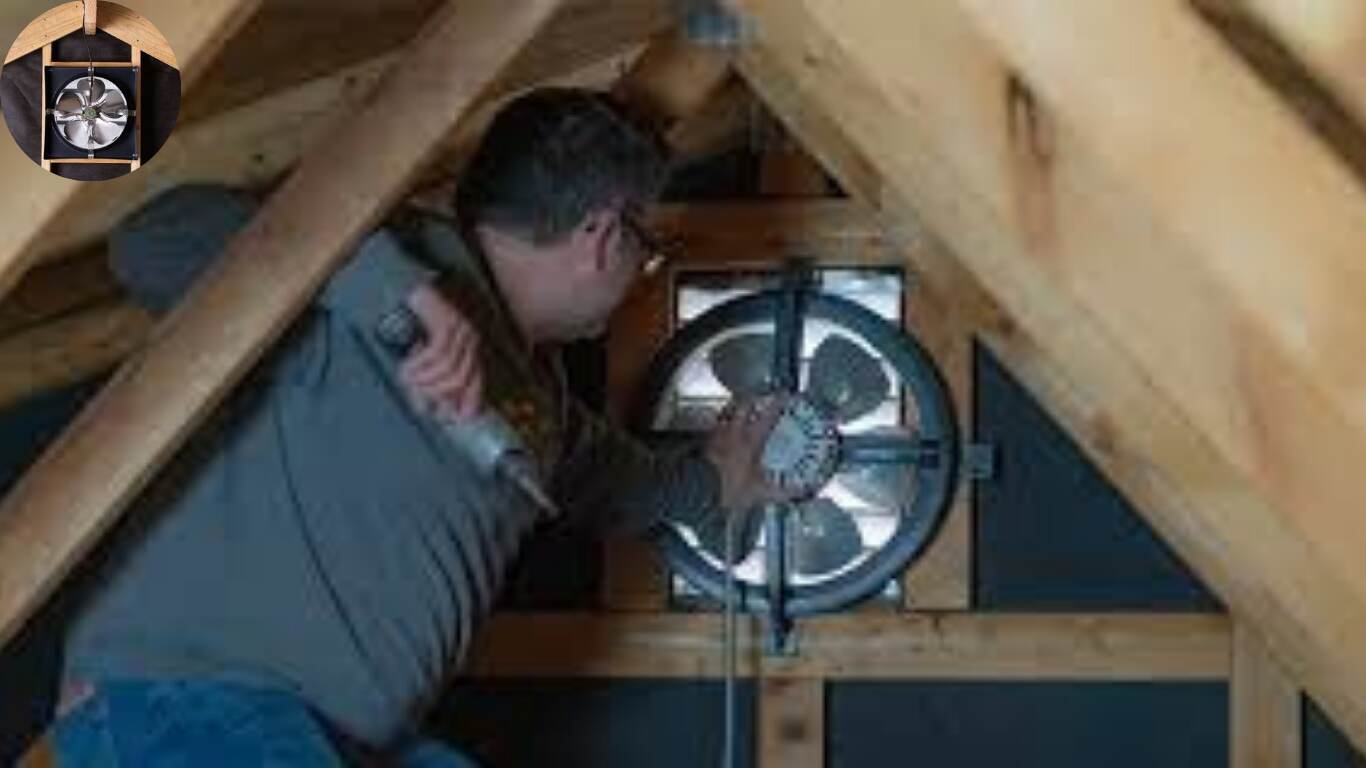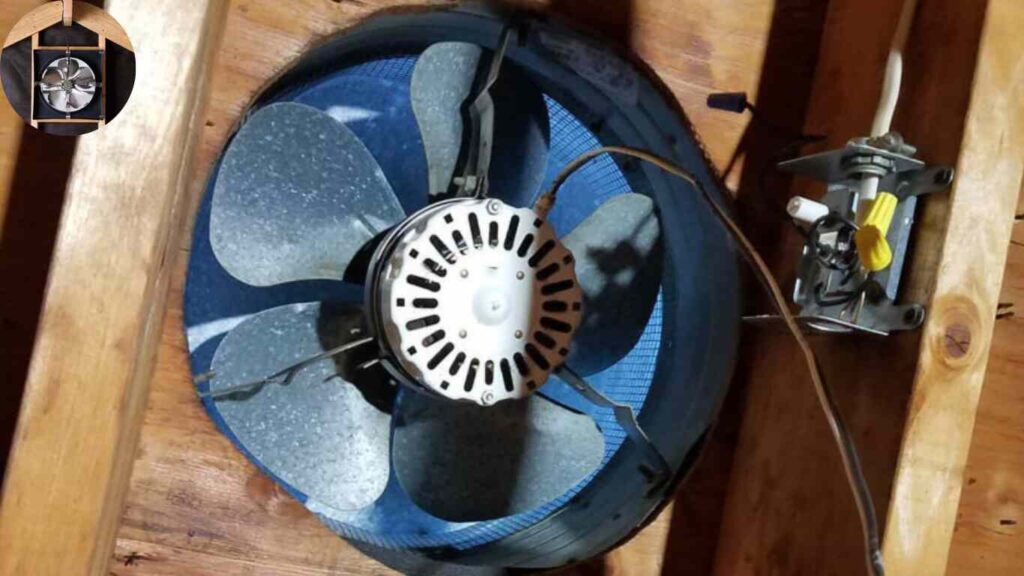Keeping your home cool becomes a priority, and when the summer heat rolls in, the many solutions to combat the sweltering temperatures, attic fans often come up as an energy-efficient and cost-effective option. But a common question lingers in homeowners’ minds: Does an attic fan cool your house?
| Feature | Does an Attic Fan Cool the House? | Details & Considerations |
|---|---|---|
| Primary Function | Indirectly cools living spaces | Attic fans remove hot air from the attic, reducing attic temperatures and heat transfer to living areas. |
| How It Works | Air exchange | Pulls hot air out of the attic and draws in cooler outdoor air, creating airflow and reducing heat buildup |
| Impact on Energy Efficiency | Can lower cooling costs | By reducing attic heat, they decrease the workload on air conditioning, potentially saving energy |
| Comfort Improvement | Yes, especially upstairs | Helps even out temperatures, making upper floors more comfortable in summer |
| Limitations | Not always effective | Less effective in extreme heat if outdoor air is hotter than attic air; may create negative pressure |
| Comparison to Whole House Fan | Less direct cooling | Whole house fans cool entire living spaces rapidly; attic fans mainly target attic temperature |
| Best Use Case | Supplement to A/C | Works best with proper insulation and ventilation, especially in hot climates |
| Potential Drawbacks | Possible energy loss | If not properly installed, can pull conditioned air from living spaces, reducing efficiency |
Understanding Attic Fans
Attic fans are simple yet powerful devices designed to regulate the temperature in your attic. If you’ve never considered an attic fan, here’s what you need to know about them.
What is an Attic Fan?
An attic fan is a ventilation system installed in your attic to help expel hot air. The attic can trap heat as the sun beats down on your roof, causing the temperature to rise significantly—sometimes reaching 150°F or more. This excessive heat impacts your cooling system and can make your home’s upper levels uncomfortably warm.
How Does an Attic Fan Work?
Attic fans operate on a simple principle: hot air rises. As heat builds up in the attic, the fan pulls the hot air out and replaces it with cooler air from outside. This process is often enhanced by proper attic ventilation, such as soffit or ridge vents, which allow fresh air to circulate efficiently.
There are different types of attic fans to suit various needs:
- Gable-Mounted Fans: Installed on the gable walls of the attic.
- Roof-Mounted Fans: Positioned directly on the roof for maximum ventilation.
- Solar-Powered Fans: Eco-friendly options powered by sunlight.
Attic Fan vs. Whole House Fan
It’s important to distinguish between attic fans and whole-house fans. While attic fans focus solely on ventilating the attic, whole-house fans are designed to cool the entire home by drawing air through open windows and expelling it through the attic. Each serves a unique purpose, and understanding the difference is key to meeting your cooling needs.
The Science: How Heat Moves in Your Home
Knowing how heat moves within your home is essential to understanding how an attic fan works. Your attic plays a significant role in determining your living space’s overall temperature and efficiency.
You may also read(does running the dryer heat up the house)
How Attics Affect Whole-House Temperature
The attic acts as a buffer zone between your home and the outdoors. On hot days, the sun’s rays heat your roof, causing the attic to absorb and retain heat. This heat eventually seeps into your living spaces, increasing indoor temperatures and reliance on air conditioning.
The Role of Insulation and Ventilation
Insulation and ventilation work hand in hand to regulate your home’s temperature. Insulation reduces heat transfer from the attic to your living spaces, while ventilation helps expel trapped heat. The attic becomes a heat trap without proper ventilation, making it harder to keep your home cool.
Why Attics Get So Hot
Attics tend to get hotter than other parts of the house because of their direct exposure to sunlight. Dark roofing materials and poor ventilation exacerbate the problem, allowing heat to build up. This excessive heat can cause your cooling system to work overtime, increasing energy bills.
Does the Attic Fan Cool the House? The Core Question
Let’s address the question at the heart of this discussion: Does an attic fan cool your house? The answer depends on several factors, but here’s what science says.
How Attic Fans Reduce Heat
Attic fans have the potential to lower attic temperatures by as much as 50°F, which can translate to a 10°F reduction in indoor temperatures, particularly on the upper floors. By expelling hot air, they reduce the heat load on your home, making it easier for your air conditioner to maintain a comfortable temperature.
Conditions for Best Results
For an attic fan to be effective, certain conditions must be met:
- Proper Insulation: Insulation with an R-value of at least R19 ensures that heat doesn’t seep into your living spaces.
- Adequate Ventilation: Sufficient soffit and roof vents are essential for proper airflow.
- Professional Installation: A well-installed attic fan ensures optimal performance and prevents issues like air leaks.
When Attic Fans May Not Help
In some cases, attic fans may not provide significant cooling benefits:
- Homes with sealed or well-insulated attics may not have excessive heat buildup.
- In mild climates, the temperature difference between the attic and outdoors may not be substantial enough for the fan to make an impact.
Benefits of Installing an Attic Fan
Attic fans offer several benefits that go beyond cooling. Here’s how they can improve your home’s comfort, energy efficiency, and overall health.
Lower Cooling Costs
By reducing the temperature in your attic, attic fans ease the strain on your air conditioning system. This can lead to noticeable savings on your energy bills during the summer months.
Improved Energy Efficiency
An efficiently ventilated attic reduces the need for excessive cooling, lowering your home’s overall energy consumption. This is not only good for your wallet but also the environment.
Enhanced Comfort
Attic fans help maintain more consistent indoor temperatures, ensuring that the upper floors of your home stay cool and comfortable.
Moisture and Mold Prevention
In addition to heat, attic fans help remove moisture from the air, preventing mold and mildew growth. This is especially important in humid climates.
Extended Roof Lifespan
Excessive heat and moisture can damage your roof over time. By ventilating the attic, an attic fan helps protect your roof and prolong its lifespan.
Improved Indoor Air Quality
Better ventilation reduces stale air and odors, creating a healthier and more pleasant living environment.
Potential Drawbacks and Limitations
While attic fans offer numerous benefits, they’re not without their limitations. Here are a few potential drawbacks to consider.
Limited Effectiveness in Certain Homes
An attic fan may not significantly impact indoor temperatures in homes with well-insulated or sealed attics. Additionally, the benefits may be less noticeable in areas with moderate climates.
Risk of Air Leakage
If your attic isn’t properly sealed, the fan may pull conditioned air from your living spaces, reducing cooling efficiency and increasing energy use.
Maintenance Requirements
Attic fans require regular maintenance to ensure optimal performance. Dust, debris, and wear and tear can affect their efficiency.
Attic Fans vs. Other Cooling Solutions
Here’s a quick comparison of attic fans, whole-house fans, and air conditioners:
FeatureAttic FanWhole House FanAir Conditioner
Primary Function Ventilates attic Cools the whole house Cools living spaces
Energy Consumption Low Moderate High
Cost Low-Moderate Moderate High
Impact on Bills Reduces AC load Can replace AC Increases bills
Installation Simple-Moderate Moderate-Complex Complex
Best Use Case Hot attics, mild climates Dry, cool nights Hot, humid climates
How to Maximize the Cooling Effect of Attic Fans
To get the most out of your attic fan, follow these tips:
- Ensure Proper Insulation: Minimize heat transfer with high-quality insulation.
- Size the Fan Correctly: Choose an attic fan that matches your attic’s square footage.
- Maintain Ventilation: Make sure the soffit and roof vents allow adequate airflow.
- Use Smart Controls: Thermostats or smart devices can optimize fan operation.
- Consider Solar Options: Solar-powered fans reduce energy costs while being eco-friendly.
Real-World Results: Case Studies & Testimonials
Many homeowners have experienced noticeable improvements after installing attic fans. For example:
- A family in Texas reported a 15% reduction in energy bills during the summer months.
- An attic fan installation in Florida lowered the attic temperature by 40°F, resulting in a cooler upstairs living area.
Frequently Asked Questions
Q: Does an attic fan cool the house enough to replace the AC?
A: No, attic fans are a complement, not a replacement, for air conditioning.
Q: Are solar attic fans worth it?
A: Yes, they can provide energy savings and are eco-friendly.
Conclusion: Should You Install an Attic Fan?
Attic fans can be valuable to your home cooling strategy, especially in hot climates. While they may not replace air conditioning, they can complement it by reducing heat buildup and improving energy efficiency.
You may also read(can drones see inside your house)
